
On the 29th and 30th of September 2014, Slovenian alpine climbers Aleš Česen, Luka Lindič and Marko Prezelj made the first ascent of the north face of Hagshu (ED, 70°-90°, III) in the Indian Himalaya, despite last minute bueracratic meddling from the Indian Mountaineering Federation.
The trio of strong alpinists topped out on the coveted north face and then traversed from the north peak to the main summit of Hagshu (6657m) following two acclimatisation climbs (both first ascents) on Lagan (5750m) and Hana's Men (6300m). All their climbs were light alpine-style ascents.
Straight after the Slovenian ascent British climbers Mick Fowler and Paul Ramsden made another first ascent on Hagshu (see UKC News).
A brief expedition report by Aleš Česen, Luka Lindič, Marko Prezelj:
After last year's failed expedition to Phola Gangchen, we – Aleš Česen, Marko Prezelj and Luka Lundič – wanted to try again this year. Already in the early stage of organization we received a clear message that the Chinese are not willing to welcome us back. All three of us were very eager to climb, so we quickly diverted our thoughts and energy to the reserve goal, Rimo III in India. Last year, after a long time, a British expedition was again organized to that location, so we applied for a permit with confidence. The communication with the Rimo Expeditions agency, which were also expecting and promising a positive response from the IMF (Indian Mountaineering Foundation), boosted our optimism. After weeks of waiting, we received a message in May that the British expedition who had wanted to try again on Rimo III did not get the permit, and that most probably we were bound to face the same outcome as well. The agency and the IMF advised us to find another goal.
The unexpected negative answer was quite dispiriting, since we had already begun "to live" with that goal. After a few days of brainstorming we decided to apply for a permit to climb Mukut Parbat. Obtaining the permit for a mountain near Kamet was supposed to be simple. Therefore, in a constant contact with the agency, we continued to organize everything necessary. Despite the fact that IMF had not issued our permit yet, we did not worry, because the permit is usually issued only a few weeks prior to arrival. We bought the flight tickets without any hesitation, but two weeks before our departure we were shocked by their message that it would be better if we picked another objective, again. We requested a clear answer from the IMF, but to no avail. A little more than a week before the departure we were quite desperate and sought advice from the agency. At the agency they proposed Hagshu in Zanskar, a mountain just recently added to the list of open peaks.
After discussing and considering the idea, a spirit of adventure awakened in all three of us, and a few days later we flew to India unburdened, with the intention to climb the mountain Hagshu. The information about the ascents and attempted ascents to one of the highest peaks in Zanskar were hard to find and limited. The first ascent of the mountain was accomplished without a permit by a team of Polish alpine climbers, who climbed a difficult route along the SE ridge in 1989. In the same year, only a few days later, the British climbed to the top of the mountain through a system of seracs and gullies in the east face. The Briton John Barry later attempted to climb the impressive north face of Hagshu four times, each time unsuccessfully. In addition to the scarce information, the internet offered a few photos of the north face, but their quality was too low to reflect the wall's character and steepness. Only a few days before the departure we learnt online that the legendary British alpine climber Mick Fowler had bold plans for the north wall as well. We were not too upset by the announced concurrent activity on the same mountain, especially after all the bureaucratic chaos on the part of the IMF and continuous goal changing to accommodate their demands.
At the briefing at the IMF in New Delhi we were authorized for climbing Hagshu between 7 September and 14 October. After flying to Leh, we received a message from the IMF while we were finalizing the expedition with the agency; the message urged us to leave the base camp on 26 September at the latest, which would mean only ten days in the base and truly a very slim chance of success. Most probably they had realized just then that we were given a permit for the same objective as the English team (Mick Fowler, Paul Ramsden, Steve Burns, Ian Cartwright) and found themselves in an uncomfortable situation. Their request was of course unacceptable. We drove further to Kargil, a town near the Pakistani border. The number of soldiers in the area was terrifying. Already the next day we drove to Akshow, a friendly village, strongly reminiscent of Tibet. There began our two-day hike to the base camp. In the morning, on the first day of access, we met two Americans in the village, and they surprised us with the news that their team, including the third member who had to descent due to health problems, also had a permit to climb Hagshu, despite the fact that they were having no intention of climbing this mountain in particular.

After crossing the river Doda, we continued the access along the gravelly bottom of the Hagshu river valley, and on the second day, at the beginning of the Hagshu glacier, we first spotted the eponymous summit in live. After heavy precipitation, which resulted in catastrophic flooding in Srinagar, the steep pyramid was covered with a thick blanket of snow. We were immediately captivated by the sight of it. Steep strips of ice in the north wall, which could be observed throughout the remainder of our access, began to clearly form into logical lines. After a few days in the base, the line that appealed to us the most was the one drawn right down the middle of the northern wall. The goal was clear.
We set up the base camp on the moraine at the west side of the Hagshu glacier, at an altitude of 4400m. Already on the first day of our stay in the base we sought a traverse across the moraine and the glacier to the foot of the north wall. Along the way we spotted an extremely sharp and aesthetic peak above the base, which appeared to be of an appropriate height and difficulty for our first acclimatization. In the evening at the base we already started to ready the equipment for the next day. After breakfast we prepared the food for two days and began our access to the distinctive saddle above the base, where the ridge which we noticed the previous day began. We climbed along the moraine rib up to the flat part of the glacier which ran from the chosen mountain towards our base and we traversed it. Climbing over snow and rocks on the other side, we reached the saddle and set up a bivouac at an altitude of 5100m. While cooking, we observed the surrounding mountains lit by the last sun rays, and we were becoming increasingly aware of the potential for alpine climbing in the area. The next morning we had breakfast in the first sun light and started to walk and climb along the ridge to the summit. The longer the duration of the ascent, the more it became clear that the first tour would give us more than we had expected. The ridge proved to be much longer than we had expected, challenging us with a decently difficult climb to the top. After short sightseeing at the summit, we descended down the route of ascent by downclimbing and rappelling. We reached the bivouac in the saddle at dusk, so we had an unplanned overnight stay there and descended to the base camp the next day.
After a two-day rest at the base, where a cook and his two assistants were preparing excellent food for us during the whole stay, Aleš and Marko went to establish ABC under Hagshu and to inspect the west wall, which also appeared interesting. The cook and his assistant helped them to carry a part of the equipment, while Luka remained in the base for another day due to digestive problems. Exactly on that day, the British team reached the base as well. The next day Luka went to ABC at an altitude of 4660m and waited for Aleš and Marko, who climbed that day to a 5680m high peak, from which the access to the west face could be observed nicely. On their way back they also investigated the access to the north face and made a good part of the trail in the snow.
The next day, we started early in the morning, with the intention to ascend to the neighbouring peak of Hagshu, named Hana's Men (approx. 6300m). The chosen goal offered a good view of Hagshu from the east and the possibility of viewing the descent from the summit. After a three-hour access to ABC we started to climb the steep couloir in the west wall of the mountain. Good snow conditions enabled us to make rapid progress. We followed a logical line and after just a few rocky passages we reached the rocky west rib at an altitude of around 6000m. Enjoying the climb on the mostly compact rock of the rib we ascended to the ridge at an altitude of 6200m and set up a bivouac. Until the fall of night we enjoyed the views of Hagshu, and it was almost as if we could touch it. In the morning we continued in sharp cold along the ridge to one of the peaks of Hana's Men and then descended by rappelling and climbing down the north-eastern wall. On the same day we passed ABC and descended to the base.
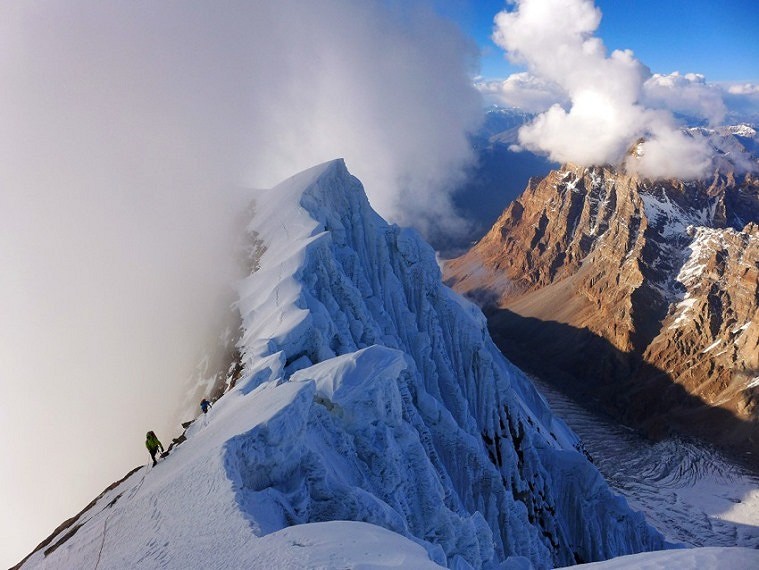
After a three-day rest in the base, it was time for the main objective. Again we went to ABC, this time with the intention to climb the north face of Hagshu. Perfectly acclimatized, we planned to climb in light and fast alpine style. At three in the morning, we headed towards the wall with a small tent, two sleeping bags and food for two bivouacs. After a little more than two hours of access, we waded into deep powder snow, drifted from the north face by winds and powder snow avalanches. After almost an hour of wading, the conditions began to allow for rapid advancement again. We climbed up a snow cone to the central part of the north face. We climbed unroped and quickly reached the steepest part of the wall with steep icy passages. Then followed a very steep ice, which surprised us with its hardness. The ice was polished completely smooth from minor powder avalanches and brittle as glass because of the cold. These conditions made the upper part of the wall surprisingly difficult, and slowed us down. It was impossible to find a suitable place for a bivouac in such terrain, so we continued climbing late into the night. At two in the morning, after 23 hours of climbing and wading, we took a break on good spot for bivouacking, on a narrow ridge at an altitude of 6320m. The next day we started late due to the previous 23-hour workday. It was not until the middle of the day, when - with the helping warmth of the sun, which already shone on us at that altitude - we continued with pleasant rock climbing and soon reached the north peak. From there we continued to climb and wade along the ridge with many ups and downs towards the main summit, which we reached around five in the afternoon on 30 September. The late hour and nice weather persuaded us into bivouacking just a few metres below the summit. The next morning we descended in the company of beautiful views, following the Polish first ascent route to Hagshu. During steep rappelling we all agreed that the Poles had done an excellent job in 1989.
We were following this demanding route practically the whole time, downclimbing and rappelling, and at the end it led us to the glacier on the south side of the mountain. There we started to descend towards the east, to the glacier between Hagshu and Hana's Men. While looking for the safest passages between crevasses, we held onto the left edge of the glacier, which ultimately led us above a steep wall, over two rope-lengths high and with a wide bergschrund at the bottom. With two descents down the rope and some downclimbing, we were happy to reach the glacier between Hagshu and Hana's Men. Wading through the crusty snow slowed us down again. For the last two hours of descent we were meandering between moonlit crevasses, and then reached the ABC, satisfied.
At that time, there were a whole lot of activities going on in the surrounding area. The American team had attempted to climb the north-eastern face of Barnaj, but unfortunately they had to turn back due to falling rocks. After only a day of rest, they also tried at the south side of the mountain, where they climbed very close to the top. The British team split into two rope teams. Ian and Steve undertook the less demanding six-thousander above the base, while Mick and Paul went up the north wall of Hagshu. They climbed the pronounced couloir in the left-most part of the northern wall, and on the third day of climbing at an altitude of 6320m they joined to the route that had been outlined by us, at the location of our first bivouac. They continued in our trail for the remainder of their ascent and the entire descent.
Since the nice weather held on, we returned to ABC after two days of rest in order to climb the rock face nearby. After three hours of access over the steep moraine and scree, we turned under the wall and headed back down to the glacier. The cold wind brought snow. We quickly cleaned up ABC, and satisfied with the outcome, descended to the base. For the finale of our stay at the base, a bear came every night looking for food among the tents. After a few visits we had become so accustomed to each other that we cohabitated in the base without any serious problems.
This year's expedition was strongly marked by bureaucratic problems, which we managed to successfully overcome with a lot of motivation. All members of the expedition got along remarkably well throughout the expedition, so given the nice weather conditions, the success was almost unavoidable. The Alpine Association of Slovenia provided us with great support; its flexible operation sustained the expedition, since shortly before the departure, we were - due to the already mentioned problems - changing our objectives almost on a weekly basis.






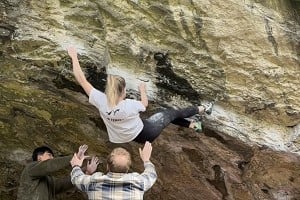
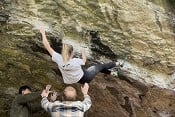

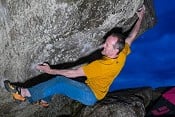

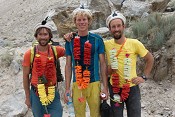
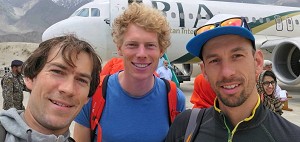

Comments